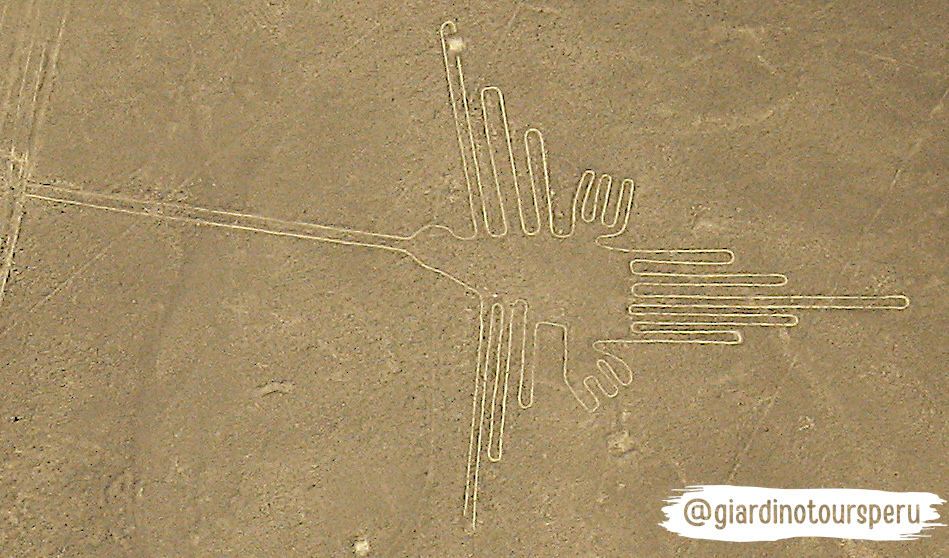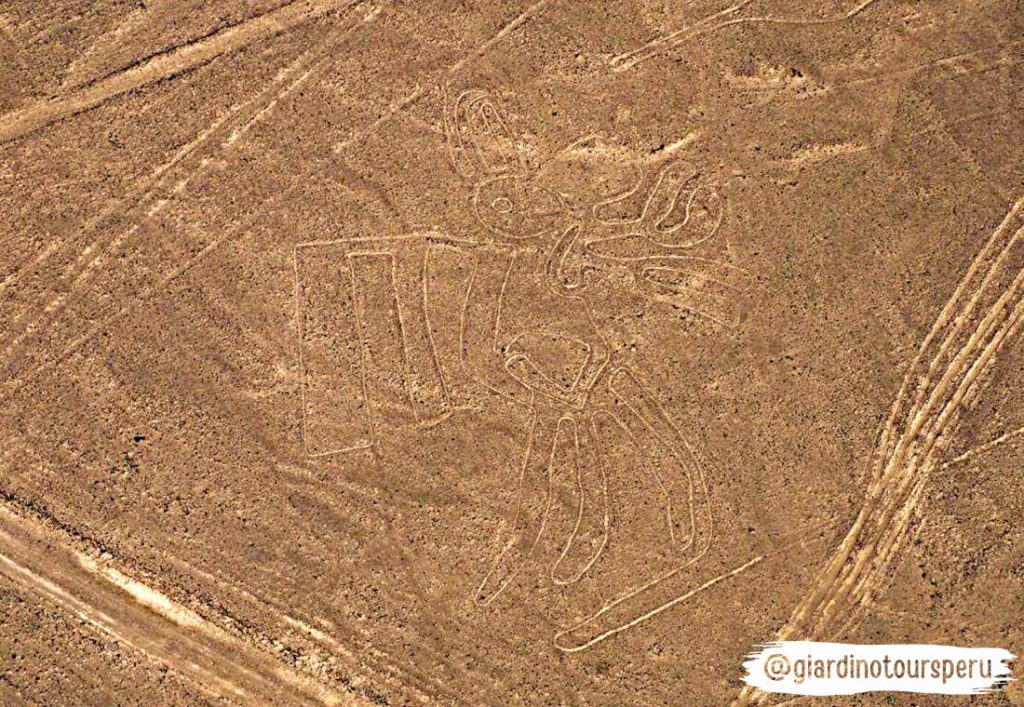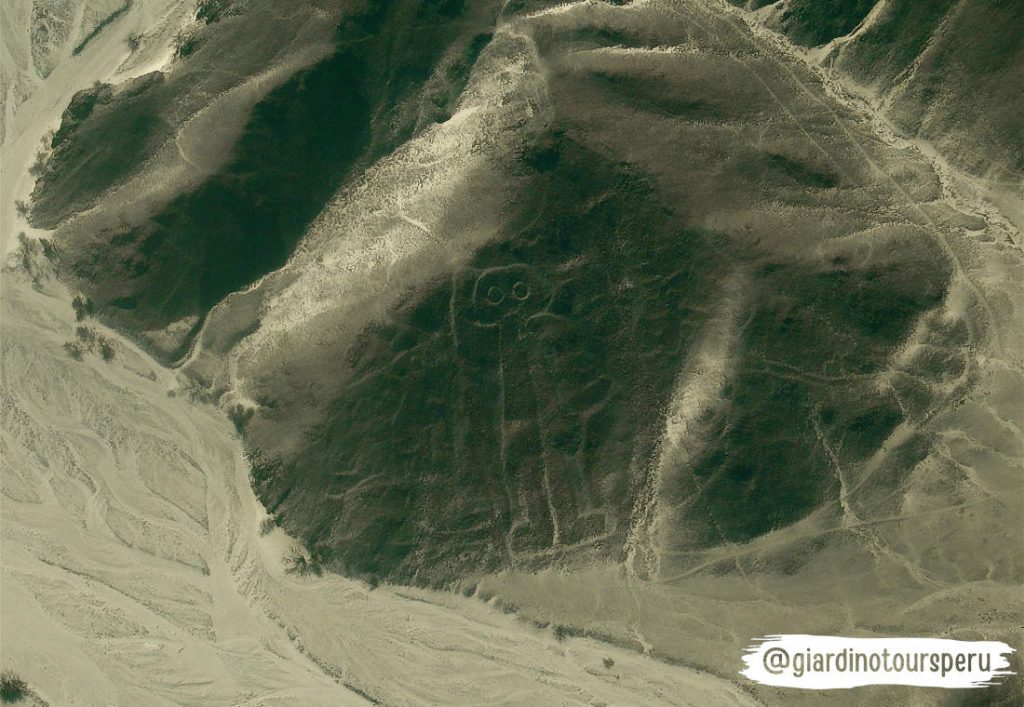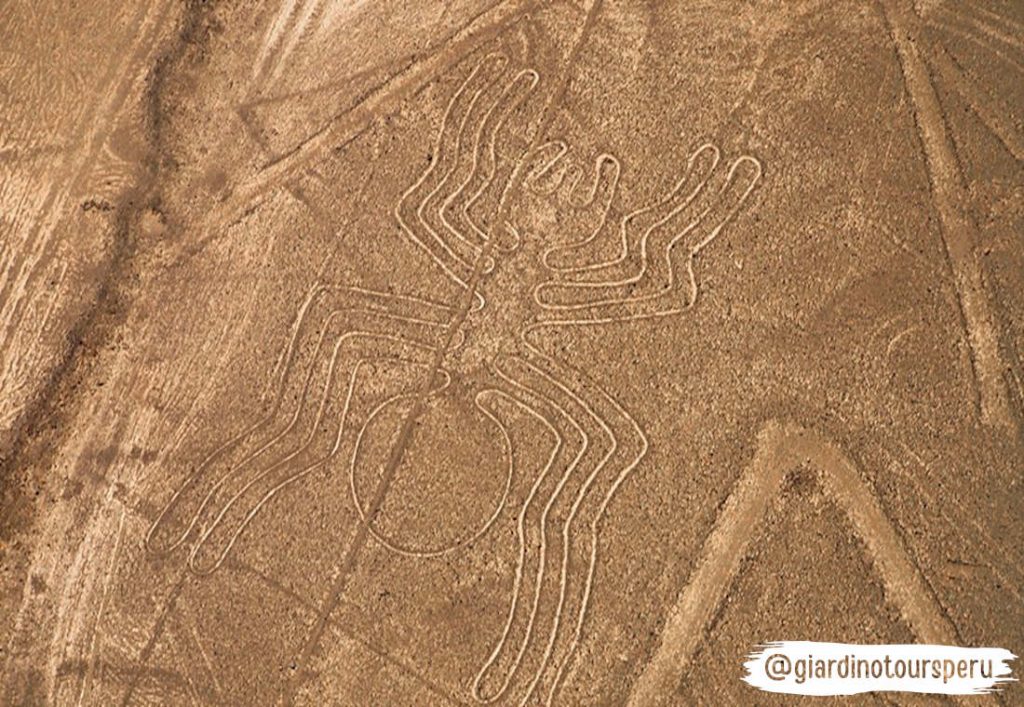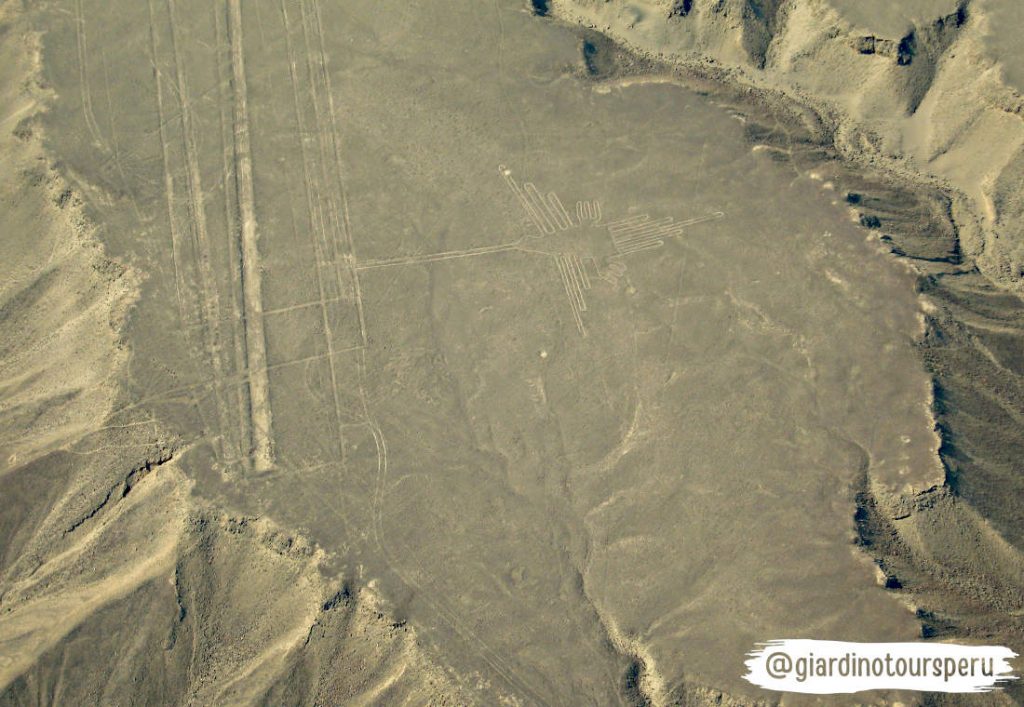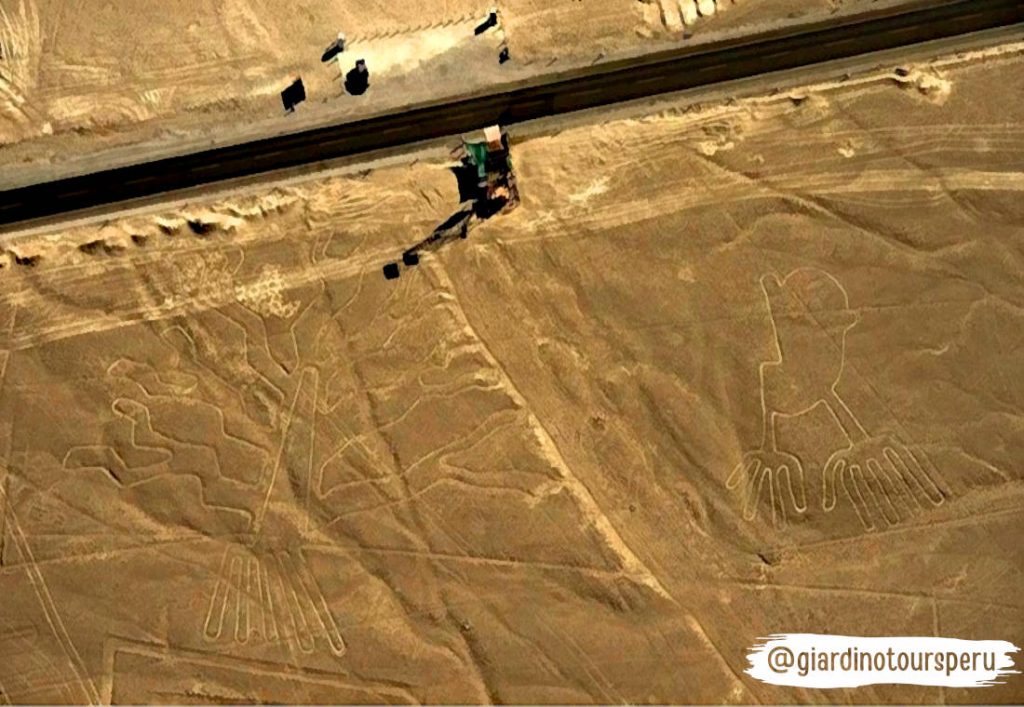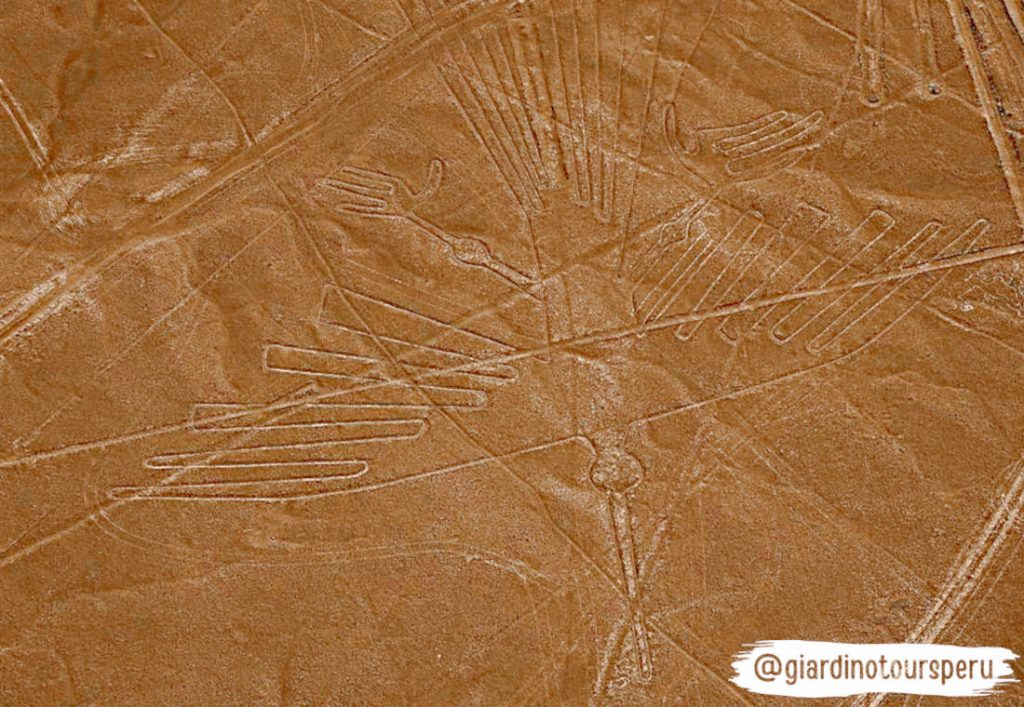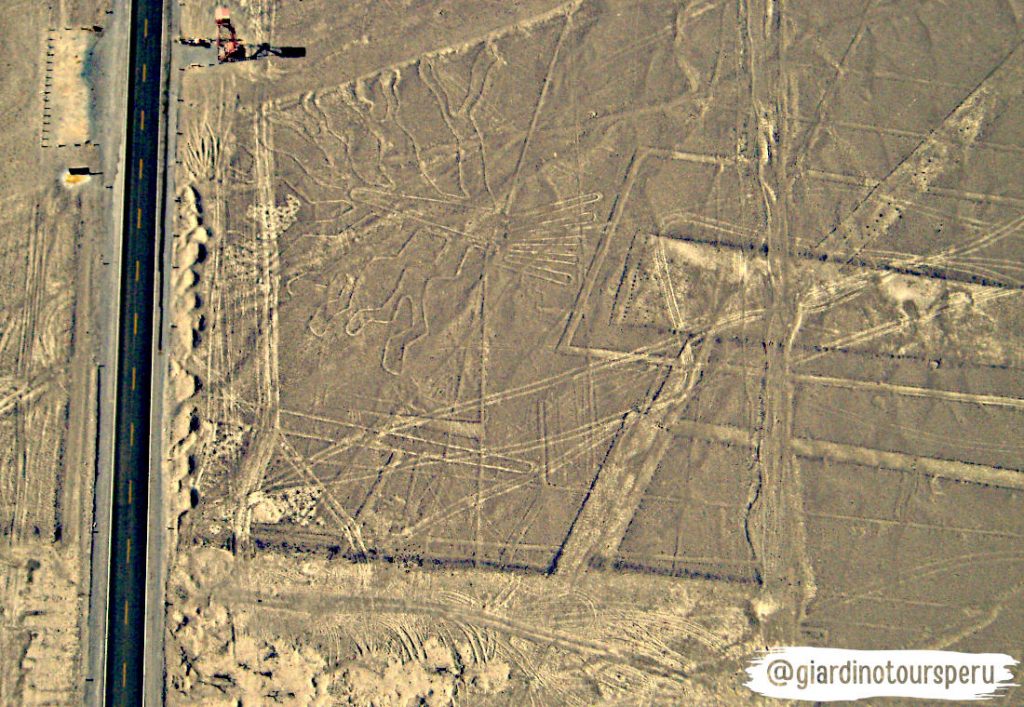The Nazca lines are found in a region of Peru just over 200 miles southeast of Lima, near the modern town of Nazca.
In total, there are over 800 straight lines, 300 geometric figures and 70 animal and plant designs, also called biomorphs.
Some of the straight lines run up to 30 miles, while the biomorphs range from 50 to 1200 feet in length (as large as the Empire State Building).
Interesting 6 facts that you should know about the Nazca Lines
- More than 1,500 geoglyphs are known in Nazca so far. The lines and geometrical figures extend over 500 square kilometers in southern of Peru. The figures are up to 1.9 kilometers, the lines up to 10 kilometers.
- They were made in the period of 800 BC. to 650 AC and probably go back to the Paracas and Nazca people, lost cultures of Peru before Inca period.
- Actually, new drawings continues appearing. A cat drawing was only discovered on a slope in October 2020.
- A more recent hypothesis about the meaning of the lines assumes that the figures illustrate the request for rain. Argument: They show many animals that would not survive in the desert, but need jungle and water.
- The Nazca Lines are a major tourist attraction in Peru. The airport in Nazca was named in honor to Maria Reiche; a German mathematician (Dresdren) who saved and studied the lines . Her small mud hut now houses the Maria Reiche museum.
- Joe Nickell, an American investigator, reproduced the figures in the early 21st century by using the same tools and technology that would have been available to the Nasca people. In so doing, he refuted the 1969 hypothesis of Erich von Däniken, who suggested that “ancient astronauts” had constructed the Lines.
How were Nazca’s lines made?

The lines are known as geoglyphs – drawings on the ground made by removing rocks and earth to create a “negative” image. The rocks which cover the desert have oxidized and weathered to a deep rust color, and when the top 12-15 inches of rock is removed, a light-colored, high contrasting sand is exposed.
Because there’s so little rain, wind and erosion, the exposed designs have stayed largely intact for 500 to 2000 years.
Scientists believe that the majority of lines were made by the Nazca people, who flourished from around A.D. 1 to 700.
Brief discovery details of Nazca Lines:
Toribio Mejia Xesspe, a Peruvian archaeologist, began a systematic study of the lines in 1926, but the geoglyphs only gained widespread attention when pilots flew over them in the 1930s. Experts have debated the purpose of the Nazca Lines since then.
In the late 1930s and early 1940s, American historian Paul Kosok studied the geoglyphs from the ground and air. On June 22, 1941, the American professor Paul Kosok was investigating one of the lines – just one day after the winter solstice – when at the end of the day he found himself at the foot of one of the lines. Kosok looked up and realized that the sunset was in direct alignment with the line.
Kosok called the 310 square mile stretch of high desert “the largest astronomy book in the world”.
Kosok was followed by the German Maria Reiche, who became known as the “Lady of the Lines”. Reiche studied the lines for 40 years and fought unyieldingly for her theories on the lines’ astronomical and calendrical purpose (she received a National Geographic grant in 1974 for her work).
Reiche battled single-handedly to protect the site; she even lived in a small house near the desert so she could personally protect the lines.
New huge cat geoglyph was discovered on 2020
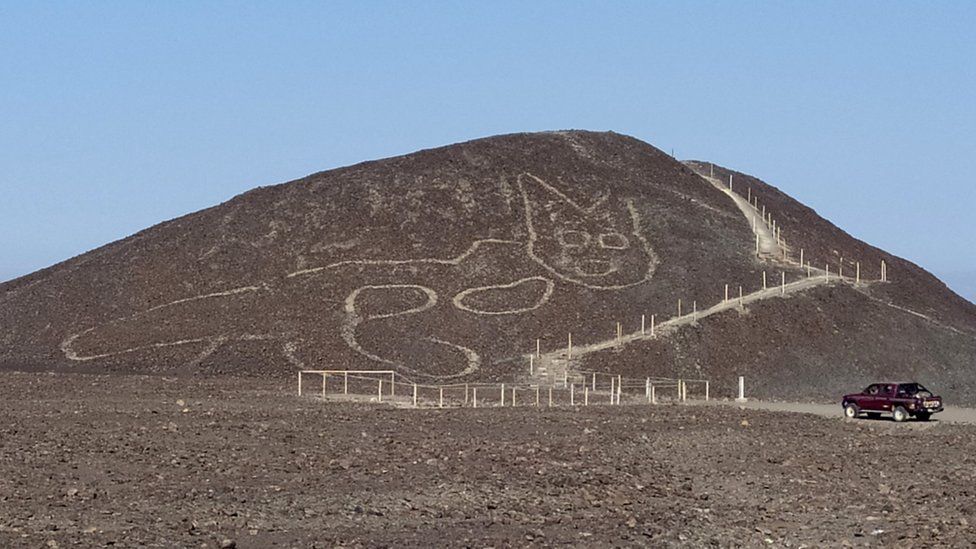
This particular geoglyph is a gigantic cat. It measures at 37 metres long, and the lines are 10 inches wide! The enormous feline was found when workers were improving an access point for visitors to look out onto the hills.
The figure is actually older than some of the other geoglyphs in the area. It was discovered by a drone exploration covering the land.
How to visit Nazca?
To Nazca city you must arrive by bus. Buses depart from Lima every hour or so, take around seven hours (Depending oft he company) and the cost is about US$35 to US$ 40 per person.
Taking to the skies to see the lines:
Once in Nazca, there are only two options for viewing the amazing lines:
1.- To climb the nearby observation tower.
2.- To take a fly over the lines. Flying is undoubtedly preferable as it offers a bird’s eye view of the most important etchings. (Attention: 30-minute flight consists of numerous sharp turns which leave most travelers feeling seriously nauseous). Take an anti-nausea tablet from a local pharmacy and try not to eat any big meals within a few hours of take off.
Early morning departures are best as there tends to be less turbulence and better visibility. The price is between 80 and 100 US $ for 30‘ minutes overflight, to which must be added a Airport tax fee S/. 25 soles (about US$8).
Visit the Museum
This is a great tip! We recommned to visit the two excellent local museums, the Casa-Museo Maria Reiche and the Museo Antonini, both provide detailed information about these ancient pre-Inca people and some of their possible motivations for drawing the lines.
Sources:
Radio Nacional . (8 de junio de 2020). maria-reiche-la-mujer-que-barria-el-desierto Peru Travel: promperu Nasca Lines History: https://www.history.com/topics/south-america/nazca-lines BR Wisen: https://www.br.de/wissen/nazca-linien-peru-maria-reiche-frau-geschichte-frauengeschichte-102.html BBC: https://www.bbc.com/mundo/noticias-41474754 RTVE . (16 de Octubre de 2020). https://www.rtve.es/noticias/20201017/descubren-nuevo-geoglifo-forma-gato-lineas-nazca/2045941.shtml

